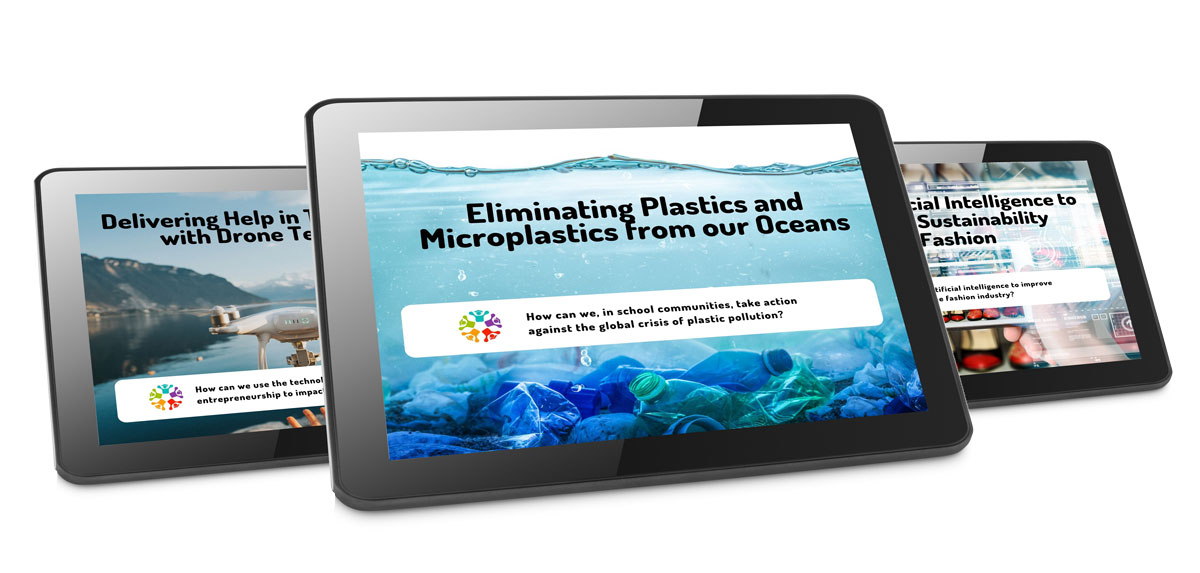Curriculumn
What is
Global Competence?
The InterEd curriculum is founded on the premise of developing global competence for our students.
Global competence is the skills, values, and behaviors that prepare young people to thrive in a more diverse, interconnected 21st century world. The need for global competence was developed by the Organization for Economic Co-Operation and Development (OECD) in response to our complex ever-changing environment in which economic, demographic, environmental, digital, and cultural elements are shaping people’s lives around the world. And it continues to rapidly evolve.
As a result, we’ve create opportunities for students to understand our world by embedding the four Global Competencies below as the foundation of our curriculum.
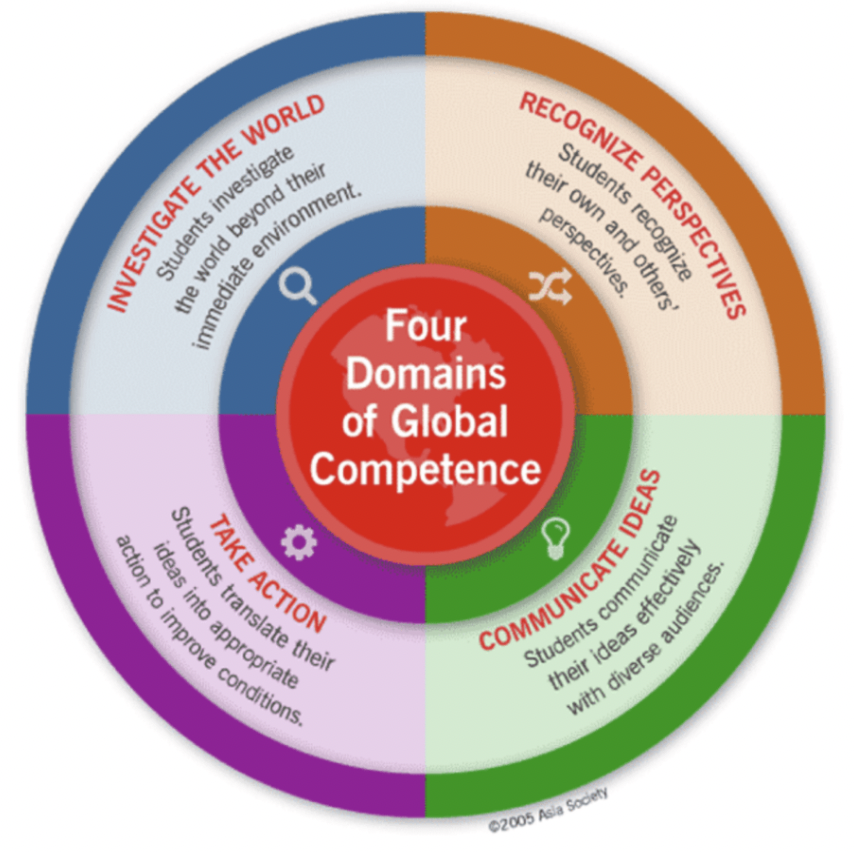
Four Domains of
Global Competence
When students practice global competencies, they embrace cultural differences and can empathize with multiple perspectives.
Students are able to work collaboratively to solve problems, innovate, and recognize the influences individuals and culture have on each other.
Together, these four competencies help students develop and articulate the knowledge and skills students need in the 21st century.
-
Investigate the World
Globally competent students are aware, curious, and interested in learning about the world and how it works.
-
Recognize Perspectives
Globally competent students recognize that they have a particular perspective, and that others may or may not share it.
-
Communicate Ideas
Globally competent students can effectively communicate, verbally and non-verbally, with diverse audiences.
-
Take Action
Globally competent students have the skills and knowledge to not just learn about the world but also to make a difference in the world.
Unit Structure
Our program is designed to empower students in their learning journey from investigating the world around them, both locally and globally, to taking action to make a difference. Each lesson in our curriculum follows a thoughtful sequence of meaningful and thought-provoking experiences designed to take students through a journey of becoming forward thinking global citizens and problem-solving innovators of tomorrow.
Below, you will find the standard sequence each unit in our curriculum will follow. Our overviews and lessons are color-coded so that you will always know what stage of the learning sequence your students are in. The number of lessons within the sequence will vary with each unit.
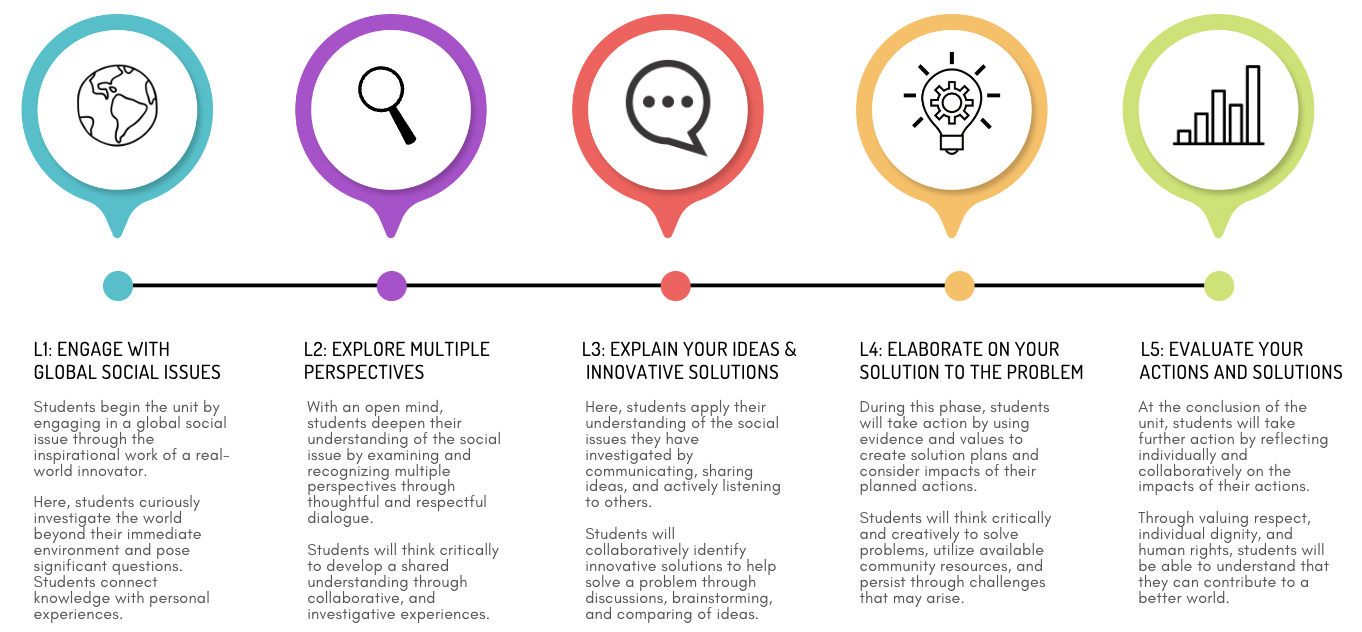
What is STEAM?
STEAM, or science, technology, engineering, arts, and mathematics is an integrated approach to learning that aims to empower students to identify problems in the world around them and solve them from multiple perspectives using integrated skills.
Our world is rapidly evolving thanks to incredible innovations in technology, and it has an enormous impact on every aspect of our lives.
We now have answers to our deepest curiosities with the click of a button and gone are the days where our learning is solely focused on retaining and recalling information.
Today, it's paramount that we prepare students for the demands of the future by understanding how information is connected rather than in siloes, and by learning how apply knowledge to inspire innovation to solve problems of the future.
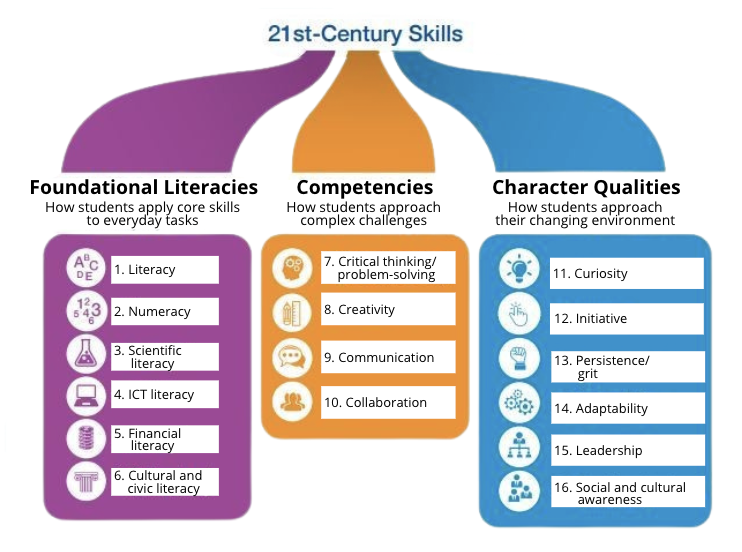
In fact, even the U.S. Department of Education thinks so, too.
The mission of the U.S. Department of Education is “to promote student achievement and preparation for global competitiveness by fostering educational excellence and ensuring equal access.”
As a result, STEAM education is essential and an integral approach that can help students develop skills to thrive in the 21st century.
STEAM helps students to:
- think creatively
- think collaboratively
- inspire innovation
- develop social skills
- develop confidence
- develop resiliency
- take risks
- apply information in new ways
Our Curriculum
At InterEd, we incorporate as many elements of STEAM as possible through meaningful and authentic ways.
This means that we embrace the concepts and elements that are naturally occurring and relevant to solving problems in the real world.
In some units, engineering is the focal point to solving problems and in others, visual arts and science is a main focal point.
We’ve built our curriculum to mimic our real lives, and we use and apply knowledge and skills that are relevant to the issue or situation.
That is how we embrace STEAM.
Silver and Light Units
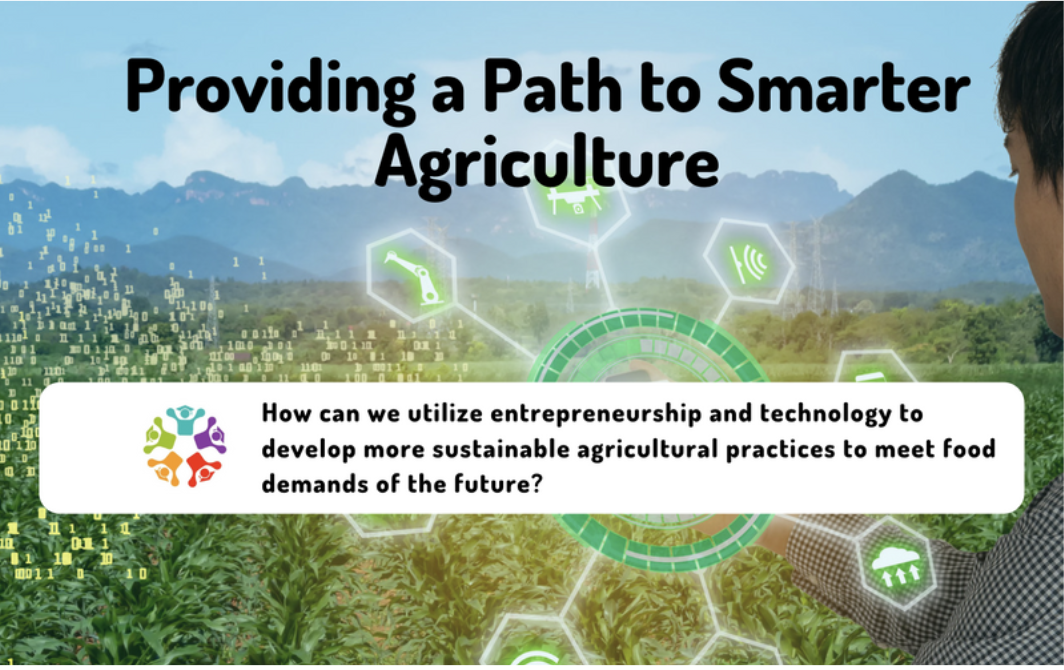
Silver Units
Silver Units are our most comprehensive curriculum. With a central focus on global issues and entrepreneurship, Silver Units follow the unique stories of innovators making a difference in our world.
Grades
6-12※
Units
per academic year6
Lessons
per unit7-10
time
50min
*Standards based on Middle School CCSS/NGSS/GC.
- Integrated concepts include global issues, entrepreneurship, career education, real-world problems, real innovator stories, live innovator experiences.
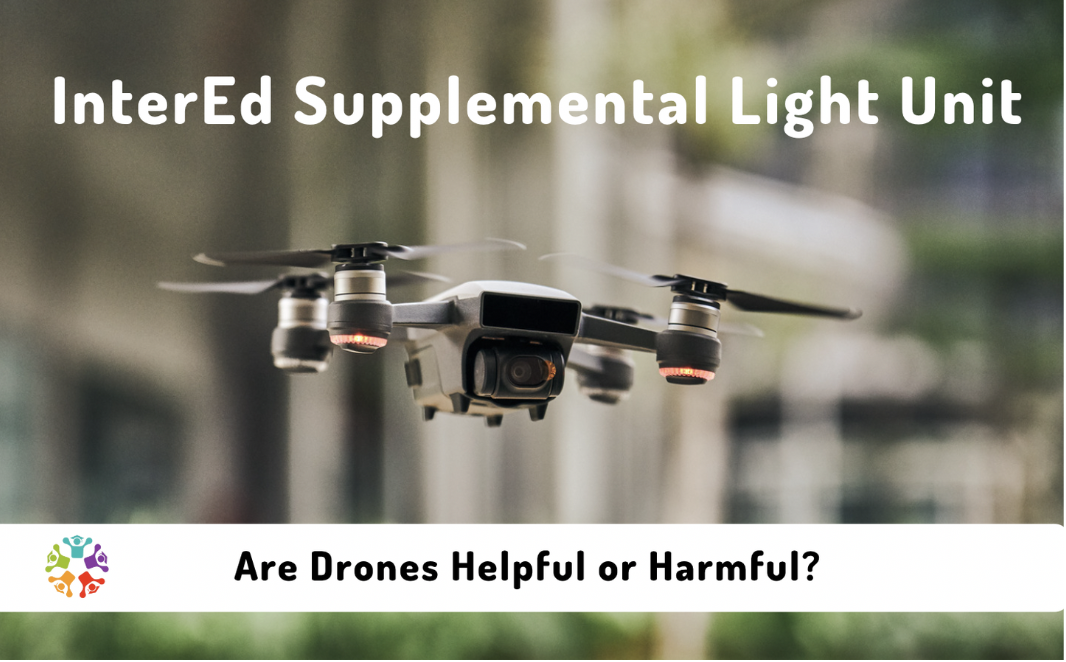
Light Units
Light Units are intended to be a lighter version of our Silver units, where students develop their global mindset and have opportunities for innovation through small scale learning experiences focused on deepening their knowledge of issues, extending their ideas from the SiIver Units, or learn latest trends in technology and innovation.
Grades
6-12※
Units
per academic year25
time
20-30min
*Standards based on Middle School CCSS/NGSS/GC.
- Flexible, self-paced learning
- Introduction to scientific concepts and theories, extensions, and learning about latest technology trends
- Can be used as a stand alone resource or in conjunction with the Silver Units
Connect with Entreprenuers
An exciting feature of the InterEd curriculum is the option to engage and interact with innovators and industry experts in connection with a Silver Unit.
During the live session, students will share their culmination projects, pitches, or presentations to the innovator or industry expert and receive supportive, live feedback on their work.
Connecting students with innovators and/or industry experts is a powerful tool to create further authenticity in how students learn and can help them realize their own potential to create change in the world.
What is Project-Based Learning?
Project-based learning, or PBL, helps students gain knowledge and skills by investigating and responding to authentic and engaging problems or challenges – rather than simply completing projects.
Through project-based learning, teachers serve as the facilitators of inquiry and reflection rather than teaching students through direct instruction.
Comparing PBL with Traditional Instructional Practices
| Project-Based Learning | Traditional Learning |
|---|---|
| Teacher facilitated inquiry | Teacher directed instruction |
| Application focused | Content focused |
| Multiplecontent areas | Single content areas |
| Multiplesolutions | Often a single, correct solution |
| Collaborative | Independent work |
| Driven by student interest | Driven by scope and sequence |
| Real world context and relevancy | - |
| Broad ideas and themes | - |
Our instructional practices align with project-based learning because PBL engages students in deeper learning, higher level thinking, and interpersonal skills that empower students to make a difference in their lives and others (Condliffe et al., 2016).
PBL has also been shown to increase retention of content, improve problem solving and collaboration skills, and improve students’ attitudes toward learning (Strobel & van Barneveld, 2009; Walker & Leary, 2009).
A perfect match with STEAM.
Our program ensures that students have voice and choice so that their creativity, ideas, passions are empowered throughout each of our units.
We create learning environments where students want to learn rather than have to learn.
Our units ensure that students are active learners seeking out new information to make both personal and real world connections.
Students share interests and curiosity with their peers and continue to learn and work collaboratively.
They ask questions to each other, dialogue about ideas and Aha moments, and make decisions that will guide their group.
Voice and choice are essential to the learning process in our curriculum.
What type of classroom would you like to be in?
What is Social Entrepreneurship?
Social entrepreneurship is about recognizing social problems that exist in our world and creating social change through the creation of a business.
It’s more than identifying a problem and finding ways to fix it.
It’s about applying entrepreneurial skills such as creating a vision, financial and information literacy, creating plans and strategies, communicating and collaborating effectively, networking with industry professionals, and valuing continuous improvement.
More simply, it’s about making good things happen in society.
Real Innovators
Our curriculum integrates the experiences of current innovators who are creating social change one innovative idea at a time.
Why?
Because they are real people who identified problems to solve from scratch, involved many people in their problem solving processes, and created value that did not exist in the world at an accelerated pace.
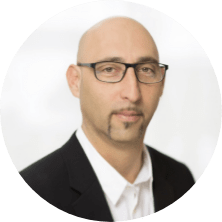
Memomi Labs Inc.
MemoMi is one of the new generation of technology companies focused on the Internet of Things, transforming industries such as retail by making devices more intelligent and connected.
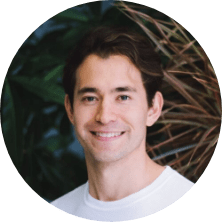
Social Innovation Japans
Mymizu is Japan's first water refill app which helps to locate and access free refill points. The app guides you to the nearest water fountain or eco-friendly cafe that offers free refills.
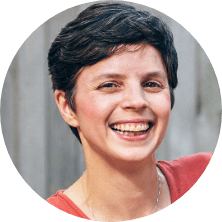
Seattle Food Tech, Inc.
Rebellyous Foods is a food manufacturing technology and production company defined solely to catapult meat alternative production toward price parity with animal-based meat.

Sensegrass
Sensegrass is a soil intelligence platform for fertilizer management. We use a combination of AI-based recommendations and soil sensors to deliver real-time soil health analyses and targeted nutrient management. We help farmers and companies reduce chemical fertilizer use, increase crop yields, and grow more sustainably.
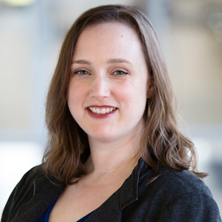
Center for Resource Solutions
Center for Resource Solutions (CRS) is a nonprofit that creates policy and market solutions to advance sustainable energy. It develops expert responses to climate change issues with the speed and effectiveness necessary to provide real-time solutions.
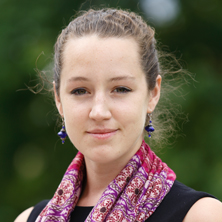
Jessie is a positive-use unmanned aerial systems and aerospace expert. She invests in and advises drone companies, founded and exited a UAS company, designed humanitarian UAV missions, and taught "drones for good" through the Peace Innovation Lab at Stanford.

Resilient Coders
Resilient Coders is a volunteer-based program focused on making web technology more available to urban youth who might not otherwise be exposed to it. We believe in technology as meritocracy.
Authentic Community
Connecting our curriculum with the real world is a common theme you’ve noticed by now.
In addition to learning from real innovators, it’s important for students to connect and engage authentically with local community stakeholders so that we can continue to build strong school and community pathways to support our students as tomorrow’s innovators.
That’s why we’ve identified ways to connect students with their surrounding community in each of our units such as:
- interviewing community members
- visiting local businesses
- researching local resources and media sites
- gathering feedback from local industry experts
- pitching presentations to local industry experts and taking action in our communities to make a difference
Endless Opportunities
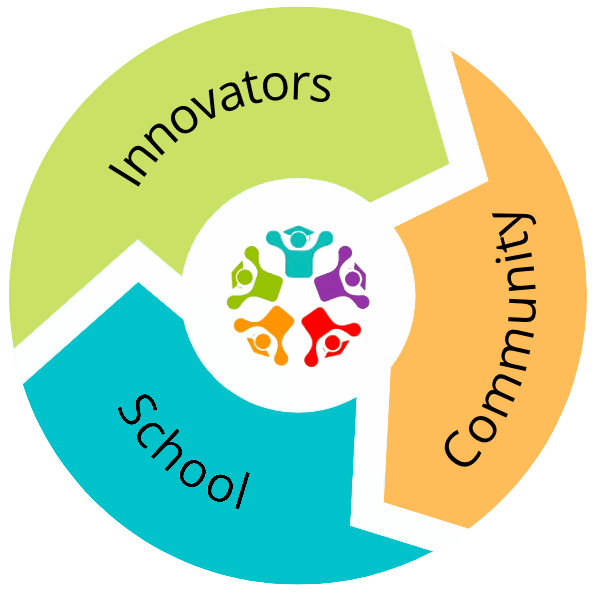
Whether it’s inside the classroom or in the local community, we’re creating endless opportunities for students to apply their knowledge to the real world - where it matters most.

